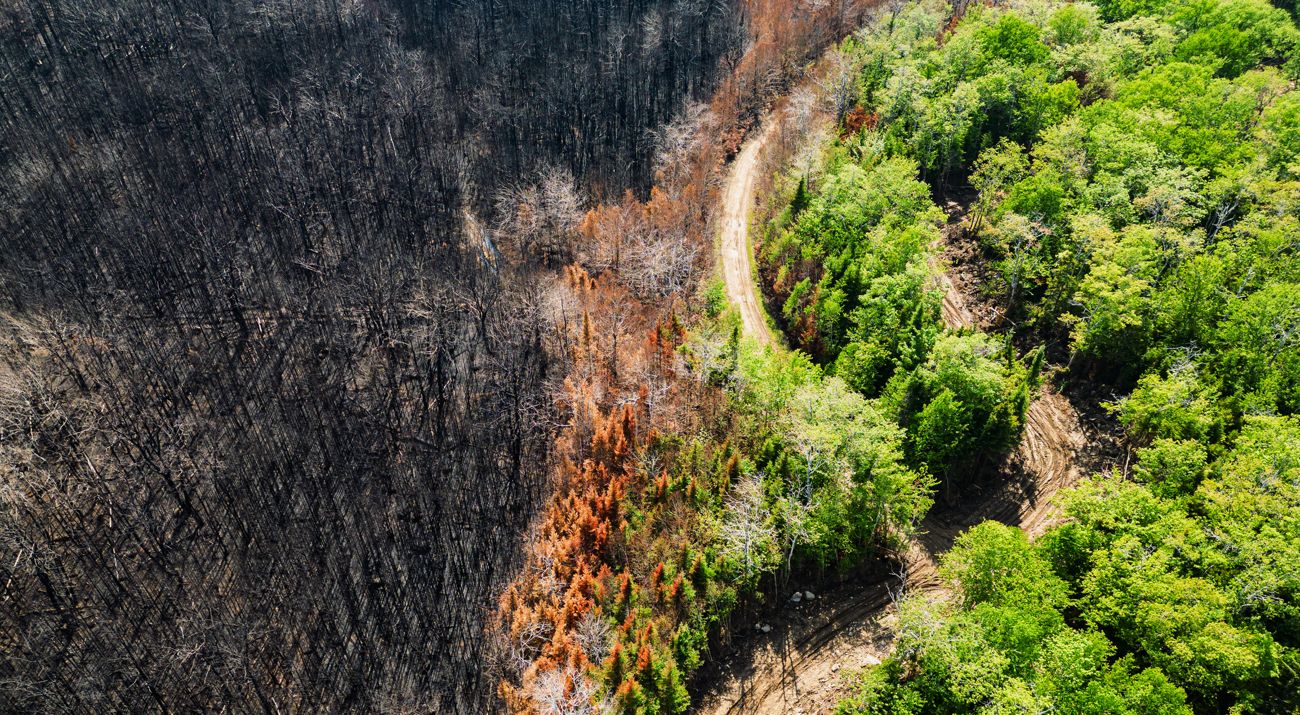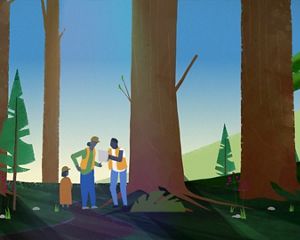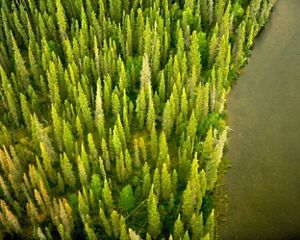Extreme Wildfires and the Living Value of Forests
A Conversation with Our Forest Experts on Canada's Increasing Wildfires and a Path Forward with Natural Climate Solutions
Wildfires are raging in the Northwest Territories this month, cutting off evacuation routes and forcing hundreds of people to be airlifted out of their communities — just the latest in an unprecedented wildfire season that has included the hottest month recorded globally (July) and record temperatures and drought around the world. Across Canada, these fires have already burned 13.5 million hectares and released nearly 300 million tonnes of carbon into the atmosphere, doubling the previous annual record for wildfires.
Our experts are monitoring these wildfires' impact on carbon emissions, how Indigenous-led efforts are conserving and managing vital ecosystems such as old-growth forests, and how biodiversity is being affected.
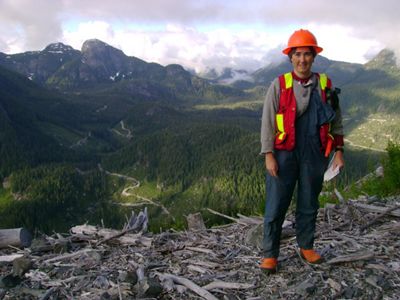
Based in Campbell River, British Columbia, Laura Smith brings 14 years of forestry background to her role of Forest and Climate Specialist. She has worked in interior and coastal forests for the BC Forest Service, the UBC Alex Fraser Research Forest and for a lumber producer, as well as on Parliament Hill focused on a variety of policy files, including the environment, Indigenous affairs, natural resources, and fisheries.

In Wakefield, Quebec, Ronnie Drever, is our Senior Conservation Scientist, who combines a PhD in biology with decades of research on the connection between forest ecosystems and carbon.
Together, our experts provide forestry expertise that connects western and eastern Canadian forests, the complexities of climate change, and that builds on Nature United’s nearly two decades of working to support Indigenous-led forest management in Canada.
Are wildfires actually more frequent and severe than ever before?
Many scientists will point out that there’s a high variability of wildfires from year to year, making it challenging to identify trends. But the monitoring and research are now clearly starting to show that wildfires in Canada are becoming more frequent and severe. And some research is suggesting a continued increase in wildfires of 25% by 2030 and 75% by the end of the 21st century from 2010 levels.
What is the connection between extreme wildfires and climate change?
Extreme wildfires are directly connected to more dry weather, including lack of both spring precipitation and snowfall over the winter, and higher temperatures, which have been increasing over the last decade due to climate change. Specifically, there are a certain number of days each year where the conditions are right for high spread of wildfires — and models indicate that the number of these days is increasing in many places as a result of climate change. Experts recognize that the number of these days may even double in eastern and northern boreal forests in the coming decades.
This doesn’t mean that every year will be a bad year, but the bad years will be more likely, and they could get worse.
Quote
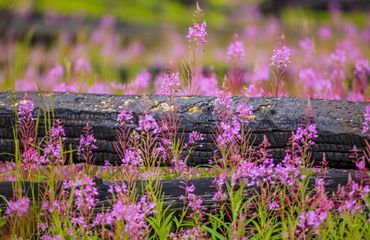
In Boreal forests, the presence of large fires can actually increase biodiversity by providing more variability across the landscape and creating space for fire-adapted species.
Is forest mismanagement — specifically suppressing natural cycles of fire in forest ecosystems — a major cause of extreme wildfires?
The fires that have raged across Canada this spring were a direct result of dry weather and extreme heat caused by climate change. It's true that suppressing fires in forests — a common practice to protect communities and forestry operations despite fire being part of a forest's natural cycles — can lead to the buildup of flammable debris and thus an increased risk of extreme wildfires. But it is important to point out that even though fuel accumulation due to fire suppression is a significant problem in some forest types, such as the dry interior forests of BC, climate change is the bigger issue in many other forest types, particularly Canada's vast boreal forests.
And boreal forests may not even be impacted by fire suppression. A report Nature United commissioned for the Manitoba Boreal indicates that the fuel accumulation problem due to fire exclusion is not the same in the boreal as it is in other forest types, particularly the dry forests of western North America, where the fire exclusion theory was developed. Here it is climate change that is increasing wildfire occurrence, behaviour and the area burned, resulting in increased combustion emissions and increased risk for carbon stores in soils and peatlands.
No matter the forest type, lightning strikes are still responsible for the vast majority of forest fires and area burned, and some research indicates that the risk of lightning-ignited wildfires could increase in some parts of Canada as the climate changes. And we can and should absolutely do a better job of educating people on the importance of protecting against human-caused wildfires as they are more within our control.
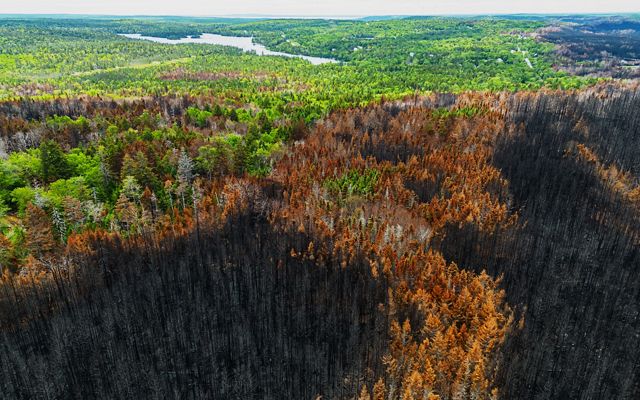
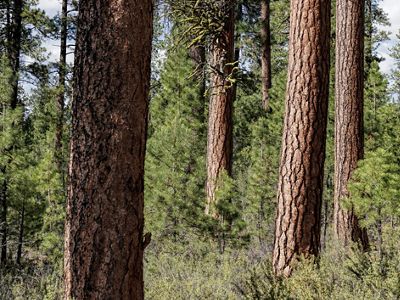
What happens in a forest when there’s an extreme wildfire?
Extreme wildfires initially devastate forest ecosystems, killing or displacing the wildlife while releasing the carbon stored in the trees and plant matter. Even if they survive, wildlife can face further mortality as fires destroy whole ecosystems, and cut them off from their food sources.
In the years following, these areas may also become vulnerable to erosion and flooding. Destruction of the organic material on a forest floor means that precipitation is less likely to be absorbed. Instead, rain often hits water repellent ash and exposed soil, creating the perfect conditions for flash flooding. In mountainous regions this also creates the potential for landslides.
At the same time, forests do begin slowly regenerating. In Boreal forests, where large fires are natural, ecosystems are generally well adapted to recovery. A central part of this regeneration includes “legacy trees” that survive in unburnt patches of forests and are a source of seeds for the next forest. Here, the presence of large fires can actually increase biodiversity by providing more variability across the landscape and creating space for fire-adapted species. For example, some species regenerate better in exposed soil, respond through resprouting or have cones that rely on fire to open.
The dry forests of southern BC are a different situation. These stands were traditionally maintained with frequent low-intensity fires that burn off fuels but tend not to kill thick-barked species like Douglas-fir and Ponderosa pine. In these regions fire exclusion can lead to a build-up of fuel, making for more severe fires, which can increase tree mortality. It is challenging for these hot, dry areas to regenerate, particularly with Douglas-fir, which is shade-requiring in this part of its Interior range.
Quote
As the costs of dealing with wildfires increases the more it makes sense to invest in Natural Climate Solutions that prevent or mitigate risk.
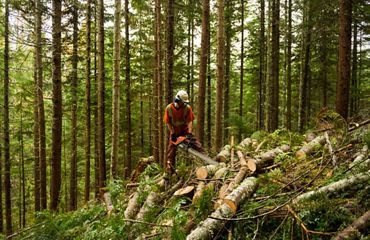
How is the frequency and severity of extreme wildfires affecting Canada’s chances of meeting our 2030 climate targets?
Canada has set ambitious climate targets, including significant decarbonization by 2030 and net-zero by 2050, but the carbon released by extreme wildfires isn’t factored into these targets. Even if we reduce our emissions through to 2050, carbon released through extreme wildfires could undermine many of those gains. To illustrate, Canadian wildfires released 300 megatonnes of carbon by mid-August, 2023, which is a quarter of all annual global wildfire emissions to date.
And the more extreme wildfires we experience, the harder it will be to reach our goal, which is in line with our targets laid out in the Paris Agreement.
As climate impacts worsen, how could changes in fire management contribute to community and economic resilience?
Adaptive responses to wildfires must account for the different circumstances and conditions of each place — including its unique ecology and social structures — alongside the realities of cost for engaging with specific strategies. This said, there are a number of Natural Climate Solutions that are both economically accessible, and can often be applied in a number of settings for social and economic resilience. As the costs of dealing with wildfires increases (e.g. costs of suppression, evacuating communities, lost infrastructure, health impacts etc.), the more it makes sense to invest in actions that prevent or mitigate risk.
These include a number of Improved Forest Management approaches. Here, biodiversity has a key role to play. Encouraging native deciduous trees in some fire-prone landscapes can create natural fire barriers as these trees are often less susceptible to drying, and thus are naturally more fire resistant. Other practices such as increasing the amount of pre-commercial or commercial thinning that takes place in a managed forest also allow forests to be more resilient. If implemented correctly, thinning treatments can lower fire intensity in thinned forests while allowing extraction of commercial values from trees that would otherwise have died anyway.
We also need better fire planning across all Canadian forest landscapes. For instance, the City of Thompson, Manitoba, has designed and begun implementation of the first FireSmart Landscape Plan in the province. The plan outlines several zones around the town where various activities (removal of forest fuels, encouraging deciduous plants and trees) in each zone can lower the risk of catastrophic fire. The community is working with the local forestry company to preferentially focus on logging areas near the town site that have fuels with high flammability.
Quote
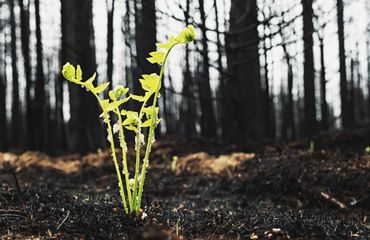
For two decades, Nature United has worked in partnership to advance Indigenous-led conservation and sustainable forestry — both of which offer climate solutions that help mitigate wildfire risk and increase resilience.
What are the economic impacts of extreme wildfires?
Besides the destruction caused to infrastructure and the cost of community relocations, extreme wildfires burn harvestable timber, while often forcing forestry companies to pause operations in many places, which has huge economic impacts.
The effects of wildfires on forestry companies and communities are both immediate and long-lasting. It is important to note that forestry is an important source of local livelihoods, alongside a major contributor to the national GDP. The current wildfire season has forced some forestry communities to be evacuated, while temporarily closing mills and forestry operations. These closures undermine the livelihoods of forestry communities and threaten infrastructure, while also disrupting supply chains and business operations.
Moving forward, this loss of forests is also factored into what is known as “allowable annual cut calculations”, which provincial government’s use to regulate cut rates in specific areas. If fires continue to become larger and more frequent it will require allowable annual cuts to be further reduced. This has already been seen in central BC, which has been hit hard by fires in recent years.
How does Nature United’s work help mitigate extreme wildfires?
For two decades, Nature United has worked in partnership to advance Indigenous-led conservation and Improved Forest Management — both of which offer climate solutions. Through our work we have attained years of experience collaborating with communities and Indigenous Nations on land use planning, ecosystem-based management, and conservation financing that ensure nature is the foundation of healthy communities, economies and future opportunities. Our strategies, including directly investing in Indigenous-led forest management and influencing policy and regulation, could easily integrate fire-related projects. Many First Nations are interested in better managing their lands for fire but lack the capacity/resources. And right now, governments are investing considerable resources into fighting fires but should also be investing in managing landscapes for carbon, which includes fire management/prevention. By leveraging key strategic partnerships and expertise in these fields we are contributing to the evolution of sustainable forests and forestry practices across the country.
Historically, Nature United’s work in B.C. has largely focused on coastal temperate rainforests, where fire risk is low. The most effective approach to manage for carbon in this landscape is to ensure that old-growth forests remain standing (protection) and ensure that young forests are managed in a way that leads to sequestering more carbon (management). As Nature United’s work in B.C. expands into the dry, interior forests, with a focus on how to better manage forest ecosystems for carbon, we must reckon with fire as an increasingly volatile dynamic within the climate context. Our team is currently scoping this work. The Nature Conservancy, Nature United’s global affiliate, has a robust fire program in North America that we can learn from, including developing and supporting an Indigenous Peoples Burning Network.
